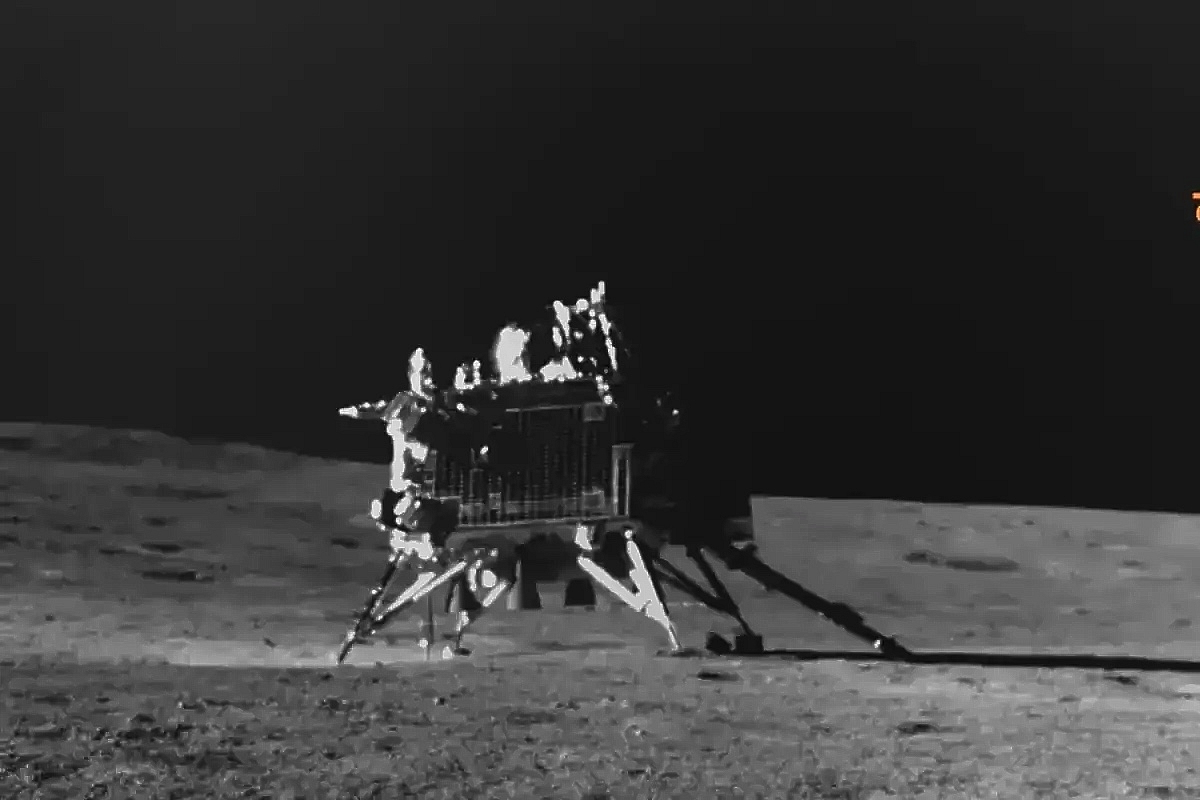Science
Hope On The Horizon: ISRO's Chandrayaan-3 Lunar Lander, Rover Modules Seek Second Shot
- There is a possibility that the lander or rover module may awaken but not fully regain functionality.

Lander Vikram on the lunar surface
With a new daybreak at the Moon's south pole, the Indian Space Research Organisation (ISRO) is preparing to awaken the lander and rover modules of the Chandrayaan-3 mission from their slumber in the freezing lunar conditions.
According to an ISRO official, the ground stations will attempt to revive the lander and rover modules and onboard instruments on Thursday or Friday (21 or 22 September), taking advantage of optimal sunlight, as per the Indian Express.
While the chances of revival are not high, it is not a hopeless situation, either. There is a possibility that the lander or rover module may awaken but not fully regain functionality.
The solar-powered Chandrayaan-3 modules were designed for a mission life of only one lunar day, equivalent to approximately 14 days on Earth.
Unfortunately, the electronics were not built to withstand the extreme cold temperatures on the Moon, which can drop below -200 degrees Celsius near the south pole, where Chandrayaan-3 is located.
Spacecraft designed to endure the lunar night typically have built-in heating systems. Russia's Luna-25, which failed to land on the Moon, had such a mechanism. On the other hand, Chandrayaan-3 was not intended to survive beyond a single lunar day.
After completing its primary scientific objectives, ISRO decided to try to prolong the lifespan of the lander and rover. They shut down all instruments before sunset and put them in sleep mode.
The hope was that the fully charged batteries would provide enough warmth to keep the instruments functional throughout the night.
If the lander and rover wake up well, they can continue operating for at least another 14 Earth days. This would allow them to gather more scientific data, further enhancing our understanding of the Moon.
Chandrayaan-3 has already provided exciting new information about the Moon's composition and environment, including a unique temperature profile of the lunar top-soil near the south pole.
Before it went to sleep, the lander module surprisingly performed a 'hop experiment'. It successfully jumped approximately 40 cm from the surface and landed safely around 30-40 cm away from its original position.
Although the jump was small, this experiment demonstrated ISRO's ability to activate the lander's engines and generate the necessary thrust for liftoff.
This capability will be crucial for future missions where the lander needs to bring back samples from the Moon to Earth.
Support Swarajya's 50 Ground Reports Project & Sponsor A Story
Every general election Swarajya does a 50 ground reports project.
Aimed only at serious readers and those who appreciate the nuances of political undercurrents, the project provides a sense of India's electoral landscape. As you know, these reports are produced after considerable investment of travel, time and effort on the ground.
This time too we've kicked off the project in style and have covered over 30 constituencies already. If you're someone who appreciates such work and have enjoyed our coverage please consider sponsoring a ground report for just Rs 2999 to Rs 19,999 - it goes a long way in helping us produce more quality reportage.
You can also back this project by becoming a subscriber for as little as Rs 999 - so do click on this links and choose a plan that suits you and back us.
Click below to contribute.
Latest